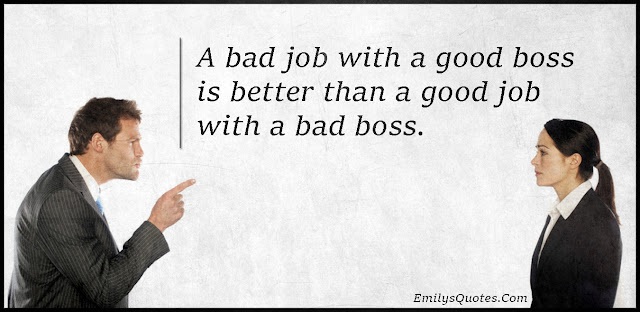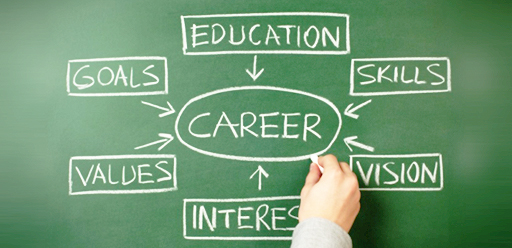Happy or Not!
Customer Satisfaction at the Push of a Button
HappyOrNot terminals look simple, but the information they gather is revelatory.
HappyOrNot’s terminals have logged more than six hundred million responses.Animation by Javier Jaén
In 2016, a European gas-station chain hired HappyOrNot, a small Finnish startup, to measure customer satisfaction at its hundred and fifty-plus outlets. One gas station rapidly emerged as the leader, and another as the distant laggard. But customer satisfaction can be influenced by factors unrelated to customer service, so, to check, the chain’s executives swapped the managers at the best and worst performers. Within a short time, the store at the top of the original list was at the bottom, the store at the bottom was at the top, and one of the managers was looking for work.
By the standards of traditional market research, HappyOrNot’s analysis was simplistic in the extreme. There were no comment cards, customer surveys, focus groups, or reports from incognito “mystery shoppers.” There was just crude data collected by customer-operated devices that looked almost like Fisher-Price toys: freestanding battery-powered terminals with four big push buttons—dark green and smiley, light green and less smiley, light red and sort of frowny, dark red and very frowny. As customers left a store, a small sign asked them to rate their experience by pressing one of the buttons (very happy, pretty happy, pretty unhappy, or very unhappy), and that was all.
What HappyOrNot’s gas-station data lacked in substance, though, they made up for in volume. A perennial challenge in polling is gathering responses from enough people to support meaningful conclusions. The challenge grows as the questions become more probing, since people who have the time and the inclination to fill out long, boring surveys aren’t necessarily representative customers. Even ratings on Amazon and on Walmart.com, which are visited by millions of people every day, are often based on so few responses that a single positive or negative review can affect customer purchases for months. In 2014, a study of more than a million online restaurant reviews, on sites including Foursquare, GrubHub, and TripAdvisor, found that the ratings were influenced by a number of “exogenous” factors, unrelated to food quality—among them menu prices (higher is better) and the weather on the day the reviews were written (worse is worse).
A single HappyOrNot terminal can register thousands of impressions in a day, from people who buy and people who don’t. The terminals are self-explanatory, and customers can use them without breaking stride. In the jargon of tech, giving feedback through HappyOrNot is “frictionless.” And, although the responses are anonymous, they are time-stamped. One client discovered that customer satisfaction in a particular store plummeted at ten o’clock every morning. Video from a closed-circuit security camera revealed that the drop was caused by an employee who began work at that hour and took a long time to get going. She was retrained, and the frowns went away.
Last year, a Swedish sofa retailer hired HappyOrNot to help it understand a sales problem in its stores. Revenues were high during the late afternoon and evening but low during the morning and early afternoon, and the retailer’s executives hadn’t been able to figure out what their daytime employees were doing wrong. The data from HappyOrNot’s terminals surprised them: customers felt the most satisfied during the hours when sales were low, and the least satisfied during the hours when sales were high. The executives realized that, for years, they’d looked at the problem the wrong way. Because late-day revenues had always been relatively high, the executives hadn’t considered the possibility that they should have been even higher. The company added more salespeople in the afternoon and evening, and earnings improved.
HappyOrNot was founded just eight years ago, but its terminals have already been installed in more than a hundred countries and have registered more than six hundred million responses—more than the number of online customer ratings ever posted on Amazon, Yelp, or TripAdvisor. HappyOrNot is profitable, and its revenues have doubled each year for the past several years; its clients have a habit of inquiring whether, by chance, the company is for sale—significant accomplishments for a still tiny enterprise whose leaders say that their ultimate goal is to change not just the way people think about customer satisfaction but also the way they think about happiness itself.
The C.E.O. of HappyOrNot, Heikki Väänänen, has the build of a long-distance runner, which he is, and the beard of a high-school sophomore. He was born in 1980, and grew up on a small dairy farm in the remote, brutally beautiful lake-and-forest region of central Finland. He and his wife live with their three children in Tampere, Finland’s second-largest city. (It’s roughly the size of Lubbock, Texas.) The company is based there, too. “Tampere has an amazing airport,” he told me recently, at HappyOrNot’s U.S. headquarters, in a one-story building in a corporate development in West Palm Beach, Florida. “From the airplane, you can see your car.”
Väänänen got the germ of the idea for HappyOrNot when he was fourteen or fifteen. He was shopping for computer diskettes at a large electronics store and couldn’t find anyone to help him. “I thought, O.K., in this location there are no people who are interested in customers, but it’s a big company, so maybe there’s someone, somewhere else, who cares,” he told me. “But filling out surveys isn’t something you can always do, so it came to my mind that maybe there could be an easier way to give feedback, and to send the data directly to people who are interested in the results.” He didn’t pursue that thought, but he didn’t forget it.
During Väänänen’s second year in college, where he studied business, he and a few friends started a small company that mainly produced computer code for other small companies. Their biggest customer was a creator of games for mobile phones, a brand-new market that was easy to enter and growing fast. In 2004, the two companies merged, with Väänänen as the C.E.O. “That timing was perfect, because mobile games took off,” he said. “Soon, we were selling to Disney, Warner, LucasArts, Sega—all the big game-brand owners.” In 2007, they were bought by a client.
Väänänen stayed on but soon became restless. One day, he described his old feedback idea to Ville Levaniemi, who’d been a colleague in both of his previous ventures. Levaniemi thought the idea was so simple that someone must have done it already, and said he’d investigate. “The next day, he came back to me and said, ‘Let’s resign immediately and start this business,’ ” Väänänen recalled. They installed the first HappyOrNot terminal in December, 2009, in a small grocery store in Tampere. “It was very exciting,” Väänänen said. “But when we left the store I told Ville, ‘Shit, what if, like, no one gives feedback?’ So we were guessing—maybe ten? maybe twenty?” By the end of the day, more than a hundred and twenty customers had used the terminal. “We saw that, if you make it easy, people will give feedback every day, even if you don’t give them a prize for doing it.”
Finland is a good place to start a technology company. The semi-collapse of Nokia—the Finnish telecommunications giant, which once dominated the global mobile-phone market—left a pool of unemployed but highly capable hardware and software engineers. “When we came to the United States to do trade shows,” Väänänen said, “we saw that maybe thirty per cent of the people were Finnish, and it was, like, ‘Why are we meeting here instead of in Finland?’ ” A Finnish national program, called Tekes, gives grants to entrepreneurs. The grants start very small but grow as the recipients meet targets. HappyOrNot eventually received about a million euros in Tekes grants, and grew very fast.
In early 2012, Väänänen and Levaniemi hired Todd Theisen to help with international sales, an area in which they’d been having trouble. Theisen had grown up in the United States, and majored in international politics and German studies. He then ran an English-language school in Germany for half a dozen years, married a Finn, and worked in sales and marketing for a Finnish educational-technology company. He saw immediately what HappyOrNot was doing wrong. He told me, “Selling in Finland is a different proposition from selling abroad, and it’s very different from selling in America. Finnish culture is extremely modest and humble.” There’s an old joke that a Finnish introvert looks at his shoes when he talks to you, and a Finnish extrovert looks at your shoes.
HappyOrNot’s international breakthrough came at Heathrow Airport. Passengers had been complaining that security workers there were rude and incompetent, and, as the 2012 Summer Olympics approached, the airport’s executives worried about the imminent influx of international visitors. They positioned HappyOrNot terminals so that passengers could use them as they cleared security. The executives were now able to identify problem locations in real time, and security workers in low-rated areas could see when they were viewed as more annoying than colleagues in other parts of the airport. Very quickly, Theisen told me, Heathrow security’s over-all passenger-satisfaction scores rose by more than half.
The Heathrow contract has been extremely important for HappyOrNot, since even today new clients often say that they first noticed the terminals either there or at an airport that installed them after one of its officials noticed them at Heathrow. The terminals haven’t reached the security area at Palm Beach International Airport, however—as I saw when I flew back to New York after my visit to the company. I did see a single sign, with a message from the Transportation Security Administration which asked for feedback about T.S.A. Precheck: “Scan the code to tell us about your experience.” But the sign was pushed back against a wall, and no one who didn’t understand how to scan a QR code would have known what to do. What’s more, anyone who scanned the code, as I did, would end up with just a link to the T.S.A.’s general customer-service Web page, on which, if they scrolled down far enough and clicked through enough options, they’d be able to find and fill out an (endless) online form, on which they would be required to include their full name and e-mail address. As if!
An episode in the third season of the TV show “Black Mirror” portrays a world in which people spend nearly all their time using their phones to rate virtually everyone else on a five-star scale. Lacie—a young woman whose obsession with her own rating is so extreme that she practices giggling in a bathroom mirror, while using gadgets installed in her eyes to click selfies—is trying to boost her rating in order to win a discounted rent on a fancy apartment. Soon, though, her rating plummets, following an argument with her brother, a temper explosion at an airport, and other stress-related misfortunes. In the end—after mug shots, eye-gadget removal, and confinement in what appears to be a prison for people with zero stars—she rediscovers the meaning of life by engaging in an unfettered fuck-you fight with another inmate.
The social satire in the episode is pretty broad, but Lacie’s world is enough like ours to be thought-provoking. Nowadays, it’s probably impossible for a reasonably with-it American to get through an entire twenty-four hours without being asked to rate someone or something, or feeling compelled to give five stars and a tip to a Lyft driver who was actually pretty terrible but clearly needed the work, or deciding to give a perfect score to a lousy online seller out of fear that otherwise the seller might give a less than perfect score in return.
HappyOrNot is satisfying because you can use it effortlessly and anonymously, without condemning yourself to a lifetime of targeted ads, and without adding still more monetizable information about yourself and your family to the world’s exponentially growing online hoard of permanently lost privacy. But Väänänen, Levaniemi, and Theisen have bigger ambitions. “Think of an airport,” Theisen told me. “If you’re a passenger and you’ve a bad experience in security, it can cloud your day. You’re pissed off, so you speak nastily to the salesperson at Starbucks, and they speak nastily to the next customer—it’s like a chain of events.”
Studies have shown that patients have better health outcomes when the medical professionals who care for them listen thoughtfully and explain what they’re doing, and even that flu shots are more effective if people are in a good mood when they receive them. Many medical facilities have signed on with HappyOrNot, because the data generated by the terminals make it easy for them to identify problem areas. “Patients who are treated well stick to their treatment plans more,” Theisen said. “And doctors who admit their mistakes and apologize for them are less likely to be sued for malpractice.” It’s also reasonably certain that, no matter what you do for a living, becoming less aggravating to others while you’re on the job is likely to make you and your co-workers more contented as well. “At the end of the day, we all care about how we’re treated,” Theisen said.
Väänänen told me, “Basically, every time a customer uses our service, we can say that, based on the data, we are making the world a happier place.” This assumes, of course, that happiness is quantifiable, and that the human supply of it rises and falls, like oil in a tank. There’s some evidence to the contrary, since even people with no objective reason to complain about anything somehow manage to find new ways to make themselves and others miserable. There are also situations in which measurement itself can lead to bad results. The Timesrecently published a story about a Veterans Administration medical center in Oregon that had boosted its “quality of care” ratings, as measured on a five-star scale, by turning away the sickest patients. Gathering those ratings had nothing to do with HappyOrNot, but the underlying issue applies to assessments of many kinds. Life wouldn’t necessarily be better if we all did the equivalent of teaching to the test.
In 2013, the people in charge of the business side of the San Francisco 49ers football team hired Moon Javaid to work on analytics. He had an M.B.A. from the University of Chicago’s Booth School of Business, and, among other things, he’d worked for a health-care private-equity firm. When he arrived, the 49ers had just had three of their best seasons ever, including one in which they’d made it to the Super Bowl for the first time in eighteen years. Nevertheless, Javaid decided that the organization ought to make a serious effort to measure and improve fan satisfaction. He and his staff created their own version of a standard National Football League postgame survey, rewriting existing questions and adding additional detail. “I wanted to be able to say to our I.T. guy, ‘Hey, our Wi-Fi didn’t score that well this week—can you fix it?’ ” Javaid said.
Many of Javaid’s colleagues were uncertain at first about the value of postgame surveys, or any surveys, but when the results began to come in they changed their minds. Al Guido, the 49ers’ president, pushed Javaid to gather data faster, and said that what he would truly like to have was feedback in real time. Javaid said that he didn’t think that was technologically possible, but soon afterward, during a business trip to New York, he saw a HappyOrNot device at J.F.K., and called the company. “We had HappyOrNot terminals here in the building within two weeks,” he told me. His staff placed them at stadium entrances, at the exits from rest rooms, and at every concession stand. During the first game the terminals were in operation, they recorded twenty thousand fan responses—about the same as the total number of surveys that fans had returned during the whole of the previous year.
Theisen and I went to see Javaid this past November, a couple of hours before the 49ers’ game against the Giants. His office is on an upper floor of Levi’s Stadium, in Santa Clara, the team’s home since 2014. There was a miniature Cavaliers basketball hoop on the back of his office door (Javaid is from Cleveland), an artificial putting green on the floor, and a big file drawer full of game balls, which he hands out almost like business cards.
“Before HappyOrNot, I could tell you on Tuesday how our concessions had performed on Sunday,” Javaid said. “But now I was able to tell you the same thing on Sunday, and in fifteen-minute increments, and I could give you the results by concession stand.” That was during the 2016 season. The team now has an app, developed by HappyOrNot and Layer, a business-communications company in San Francisco, that allows it to monitor results second by second. “You can’t do that with surveys,” Javaid said. “There are seventy thousand people in the building, and, even if you could somehow get them to answer in real time, it would be extremely difficult to process the information.” By next year, Javaid’s staff will have deployed a hundred and twenty terminals throughout the stadium.
In Javaid’s office, I also met Julianne Jochym, a business-strategy analyst. “What we got from Layer is kind of a messaging app,” she said, demonstrating on her iPhone. If the proportion of negative responses suddenly rises at a particular terminal location, an employee can be dispatched to investigate. “You can type a message, here, and also send photos,” she continued. “So they can let you know, Hey, this men’s room is out of paper towels, or this floor needs to be swept and here’s a picture, or this concession stand doesn’t have hot-dog buns.”
On a large monitor on a wall of Javaid’s office, Jochym showed us several ways she’d devised to represent HappyOrNot data graphically, for presentation to other members of the organization. One was a stadium seating map on which the HappyOrNot terminals were identified by numbered, colored circles. “You can see all the terminals here, and you can move through the data hour by hour. The colors change as the ratings do.” The most consistently high-rated performer—even during the two most problematic periods for customer service, halftime and the fourth quarter—was a new vender, which, unlike most other venders, used the same, experienced work crew at every game.
“Last year, a lot of the red”—the frowny, unhappy color—“was kind of in this area, down by this end of the stadium, and now that has kind of moved over here,” she continued. “So we know where our problem areas are, and we can focus on those.”
On game days, fans begin to arrive at Levi’s Stadium long before kickoff, and then either hang out in the parking lot, which has its own venders, or wander through the stadium, drinking, eating, and buying stuff. After our meeting in Javaid’s office, Jochym took Theisen and me on a pre-game tour. We watched a man in a 49ers T-shirt having his photograph taken with eight cheerleaders, and a woman in a Giants T-shirt having her photograph taken while sitting on a gold-colored plastic throne, which was connected in some way with Yahoo’s fantasy-football league. We walked through two of the stadium’s “clubs,” including one in which fans, for several hundred dollars more than the price of a regular ticket, can watch the game on large television monitors while eating ribs that are nearly the size of the ones that made the Flintstones’ car tip over.
On the main concourse, Jochym reoriented a couple of HappyOrNot terminals that had been moved out of position. When I first met Theisen, I asked him what would prevent a store manager from standing next to a terminal and repeatedly pressing the smiley button, and he said that the devices have a brief reset delay, which blocks them from registering closely spaced multiple presses, and also that the most important information from any location comes from the number of frowny presses, which not even a dishonest employee would be able to undo. There’s also safety in numbers. At the stadium, I watched a youngish guy idly reach over and press the red button on a terminal as he walked past a concession stand that he hadn’t bought anything at: a false negative! But Theisen and Jochym were unconcerned. When you receive twenty thousand impressions in the course of a few hours, as the 49ers do, the signal-to-noise ratio is necessarily high.
During the first half, Theisen and I sat in nice seats on the fifty-yard line. One of the stadium’s many fan-friendly amenities is fifteen hundred Wi-Fi access points, mounted under seats; they can accommodate forty thousand people simultaneously streaming at LTE speeds. If anything goes wrong, Javaid and his staff hear about it. (Frustration with bad Wi-Fi is a form of unhappiness that didn’t exist until relatively recently—raising the possibility that human satisfaction, over all, may be a zero-sum game.) Theisen used his phone to scroll through up-to-the-moment results from all sixty of the stadium’s terminals. He noticed nothing unusual, so we returned our attention to the field.
Later—as it began to seem likely that the 49ers were going to win their first game of the season and the Giants were going to lose their eighth—we had to deal with an issue that San Francisco fans have complained about since Levi’s Stadium opened: late-afternoon sun, which frequently blasts people sitting on the east side of the field. A young mother in the row directly in front of ours used a 49ers jacket to create a sun shield for her baby, who was asleep, and just about all the people wearing hats had pulled the brims down to shade their eyes. There wasn’t a button anywhere that I could push to register my feelings about any of that. But Theisen and I had passes that allowed us to sit pretty much anywhere we wanted, so we dealt with our unhappiness the old-fashioned way, by moving to seats on the other side. ♦
This article appears in the print edition of the February 5, 2018, issue, with the headline “The Happiness Button.”











